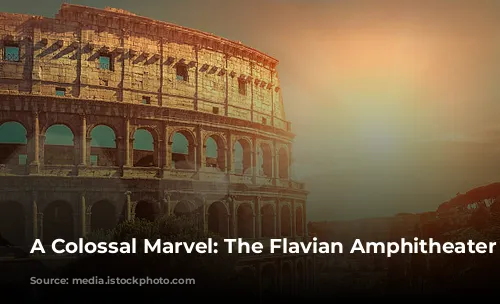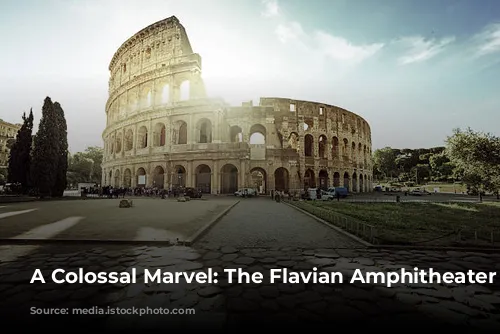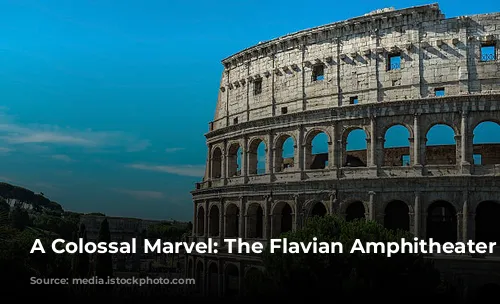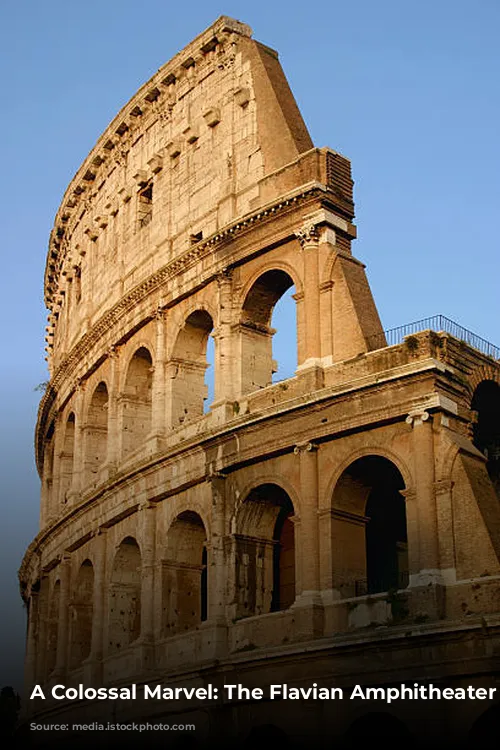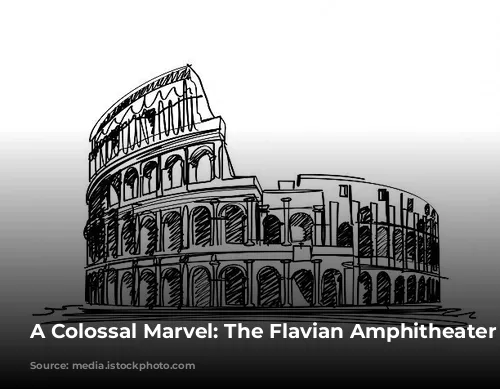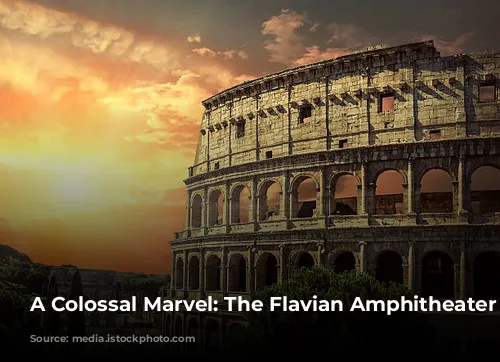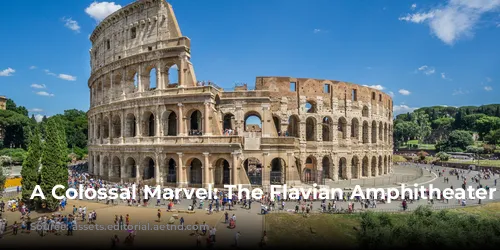Step back in time to the heart of the Roman Empire and behold the Colosseum, a breathtaking monument that stands as a testament to ancient Rome’s architectural prowess. More than just a place for gladiatorial combat and wild animal spectacles, this magnificent structure, known officially as the Flavian Amphitheater, served as a potent symbol of the Flavian dynasty’s power and a remarkable achievement in engineering.

A Symbol of Imperial Power and Urban Renewal
Following the tumultuous reign of Nero, Vespasian ascended to the throne in 69 A.D., marking the start of the Flavian Dynasty. Vespasian, along with his sons Titus and Domitian, embarked on an ambitious project to rebuild Rome, a city ravaged by fire, plague, and civil war. The city’s resurgence found its most striking expression in the construction of the Colosseum, a new amphitheater built in the heart of the city and funded by the spoils of war from the Roman conquest of Jerusalem. Dedicated a decade later, the Colosseum symbolized Rome’s triumphant rebirth, standing as a powerful testament to the Flavian Dynasty’s strength and vision.

A Masterpiece of Engineering and Architecture
The Colosseum was not just a symbol; it was an architectural marvel. It was the largest and most complex permanent amphitheater ever built in the ancient world. A colossal structure, it rose to 157 feet, roughly the height of a 15-story building, and boasted a capacity of 50,000 to 80,000 spectators. This monumental achievement was made possible by the skillful use of concrete, travertine, marble, stone, and timber.

Beyond Entertainment: A Reflection of Roman Society
The Colosseum was strategically built on the site of Nero’s opulent estate, a move that cleverly served the Flavian Dynasty’s political agenda. By replacing Nero’s extravagant and potentially controversial Domus Aurea with a public amphitheater, they sought to solidify their own power and diminish their predecessor’s legacy.
The Colosseum wasn’t merely a place of entertainment; it was a microcosm of Roman society. Social order was strictly upheld within its walls, as the best seats were reserved for the elite, with commoners relegated to higher tiers. The Colosseum’s design reinforced this hierarchy, with separate entrances and corridors ensuring that social groups remained distinct. However, the amphitheater’s elliptical architecture ensured that everyone, regardless of their social status, had a clear view of the action unfolding below.
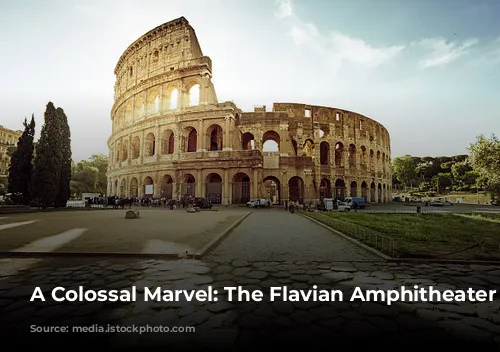
The Architectural Legacy of the Colosseum
While the Colosseum’s grandeur is evident, its true legacy lies in its innovative construction and design. The amphitheater stands out for its masterful use of concrete, a material that revolutionized Roman architecture. The Colosseum’s solid concrete foundation, expertly built despite challenging soil conditions near the Tiber River, is a testament to the Romans’ engineering prowess. It stands as a testament to their advanced understanding of concrete and its ability to withstand the test of time.
The Colosseum was more than just a massive structure; it was a feat of engineering, incorporating advanced features like a sophisticated drainage system used for mock sea battles. It even boasted a retractable awning operated by sailors to shield spectators from the elements. Beneath the arena, a complex network of tunnels and chambers known as the hypogeum housed props, scenery, and participants, adding to the Colosseum’s theatrical spectacle.
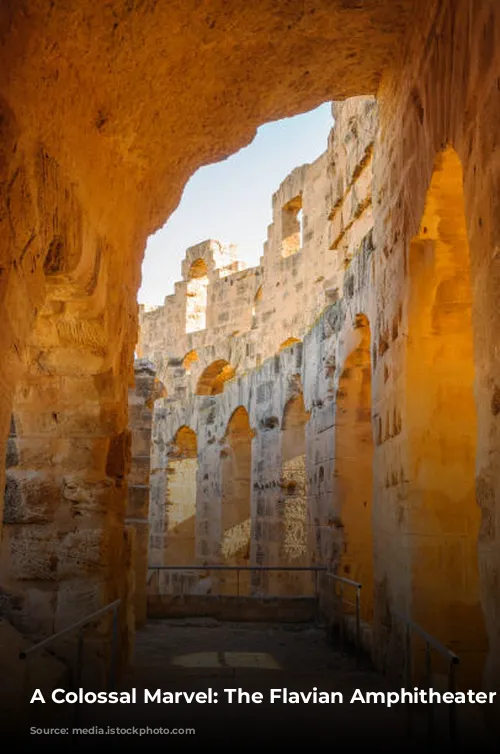
The Construction of a Legacy
The construction of the Colosseum remains shrouded in mystery, particularly concerning its funding and the labor force. While many scholars believe the Colosseum was partly financed by the spoils of war from the siege of Jerusalem, the precise cost remains unknown. The story of Jewish slaves forced to build the Colosseum, while compelling, is a controversial claim that lacks definitive historical evidence.
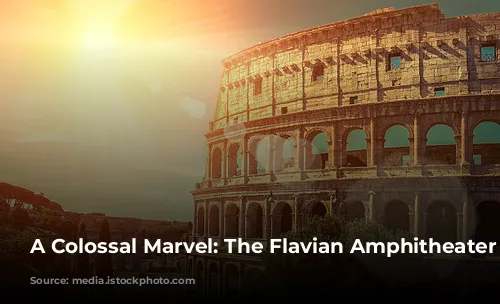
The Enduring Legacy of the Colosseum
The Colosseum’s impact extends beyond its historical significance. It stands as the ancestor of all modern outdoor sports stadiums, inspiring the use of arches for support, the elliptical shape, and the organized entry and exit systems based on seating location. It is a monument that continues to inspire, reminding us of the ingenuity and grandeur of the ancient world.

